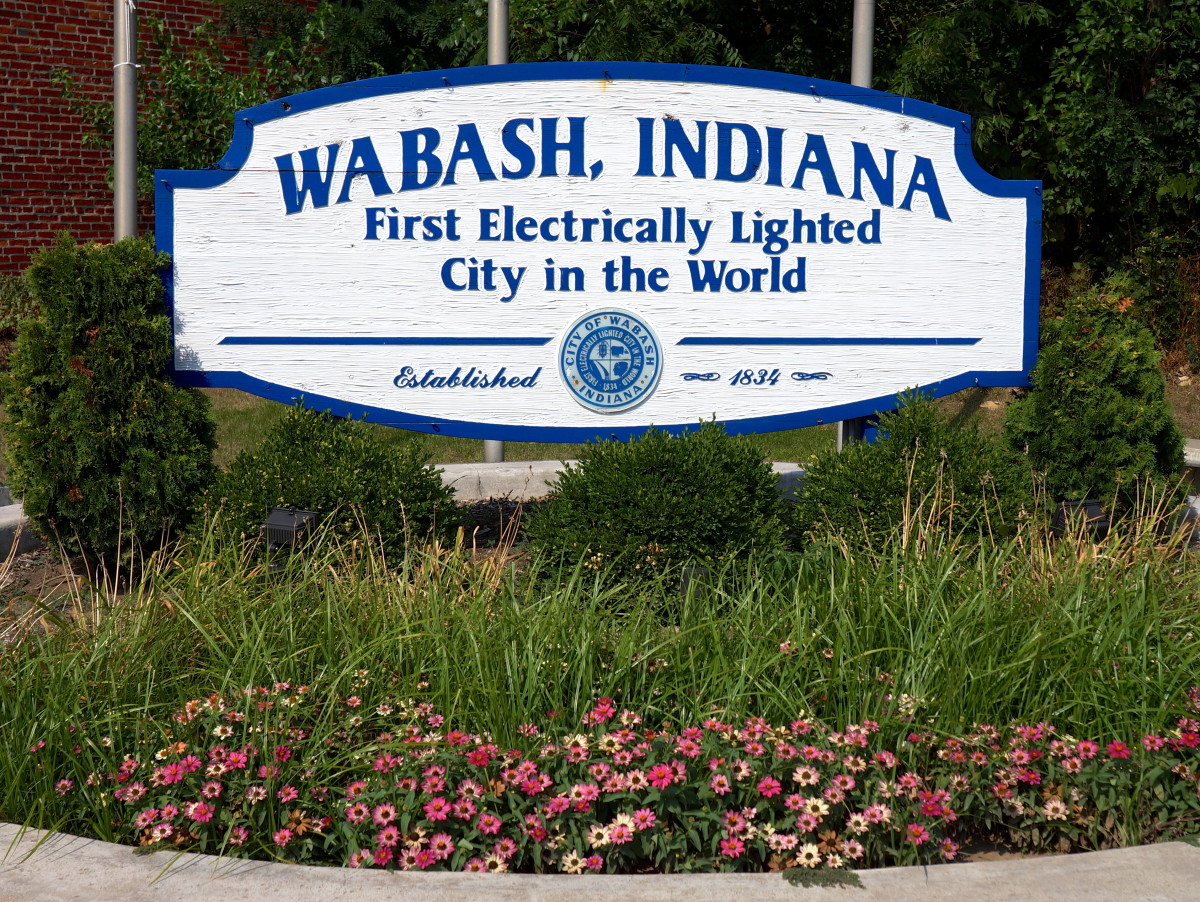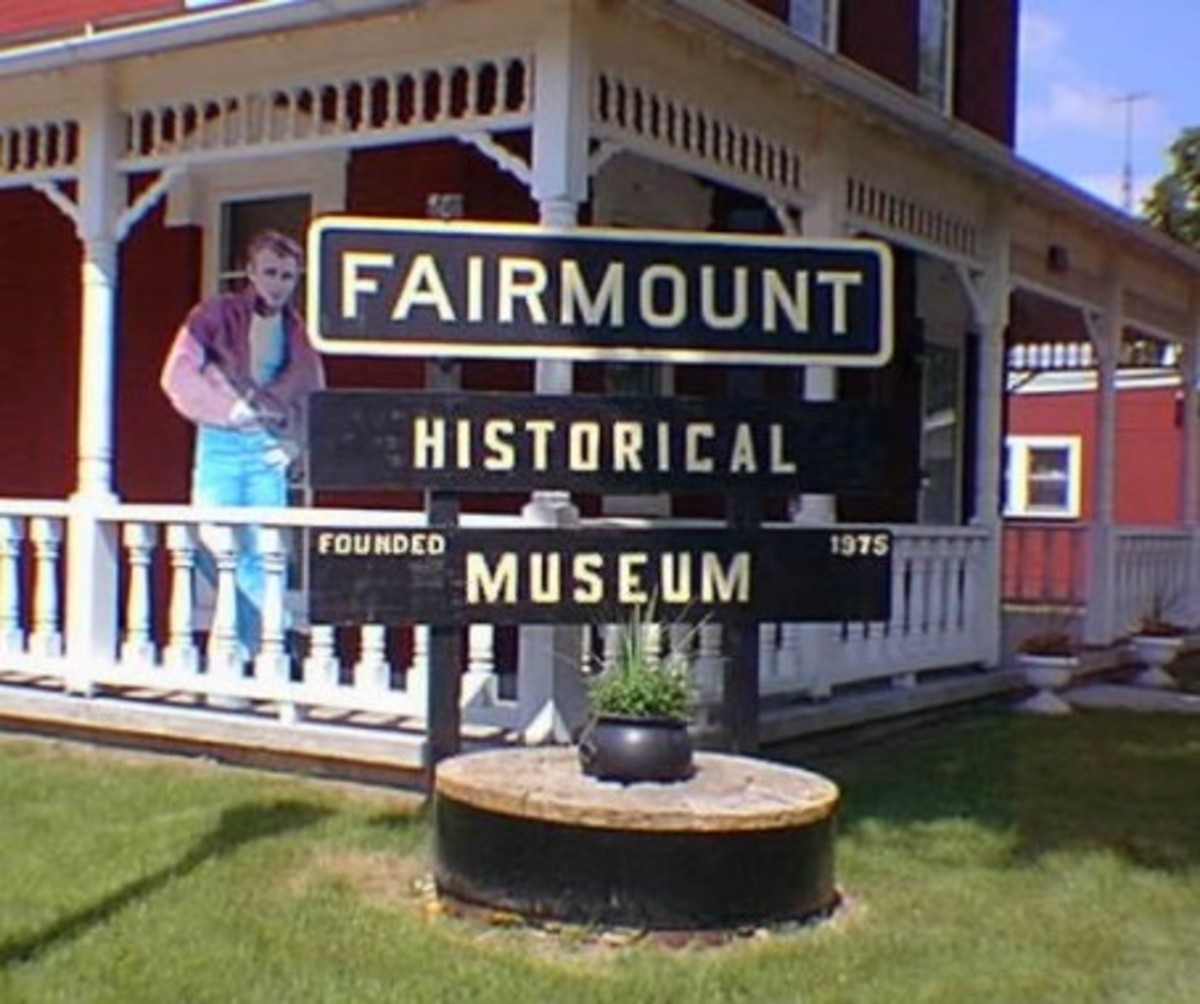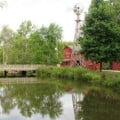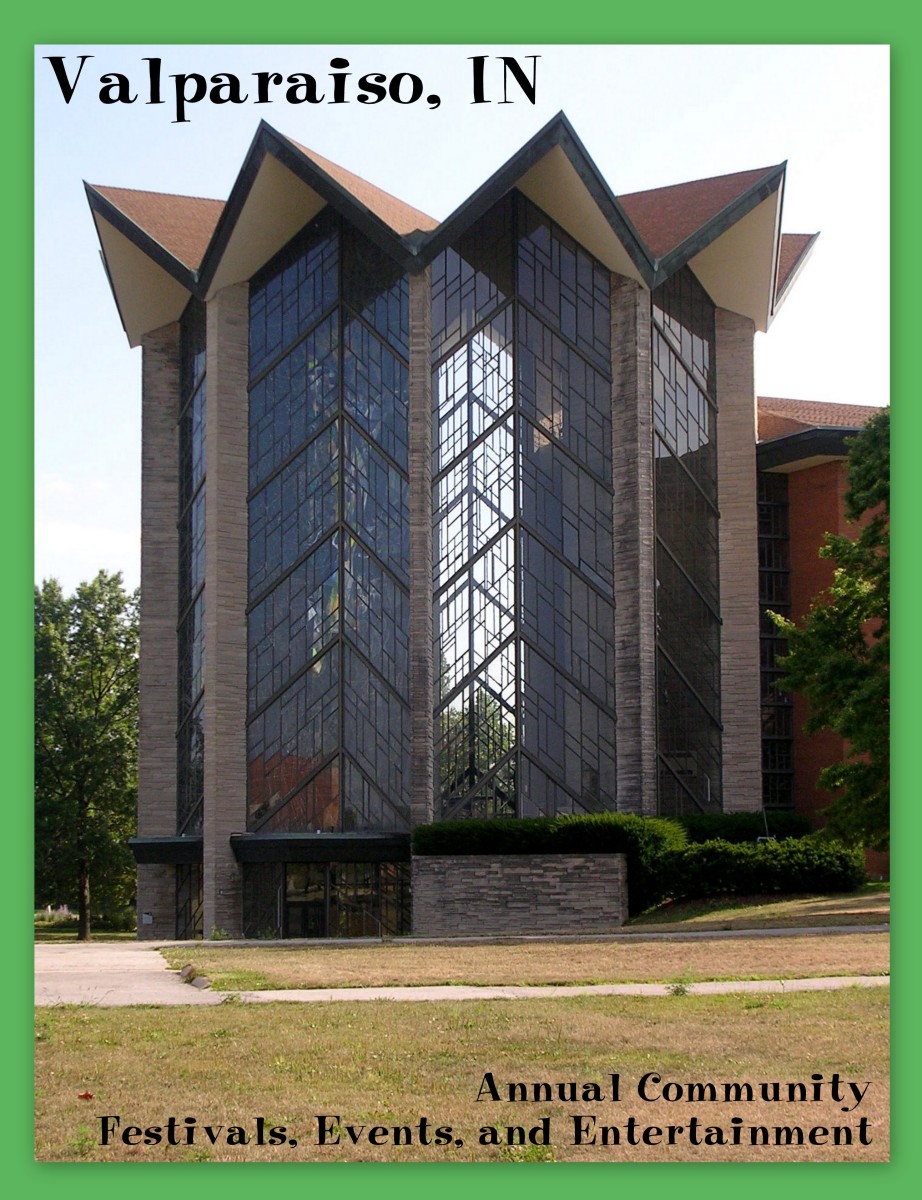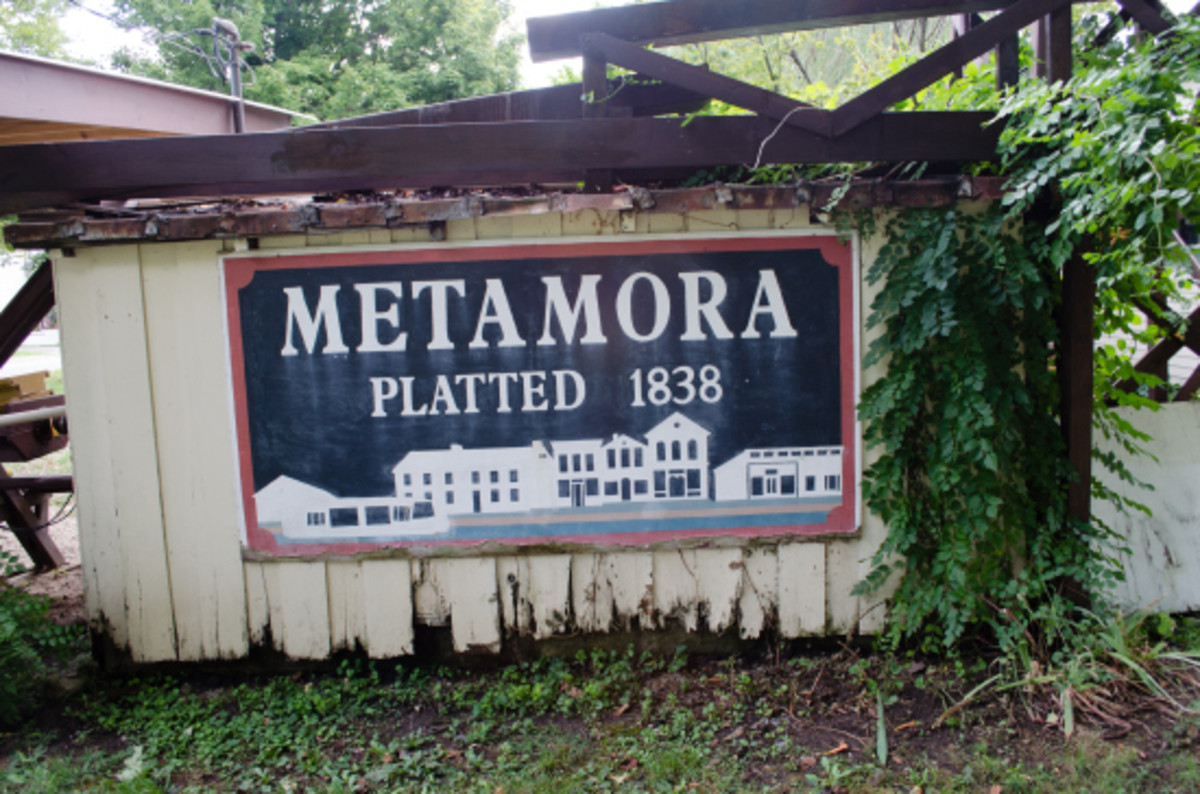- HubPages»
- Travel and Places»
- Visiting North America»
- United States
Wabash & Erie Canal
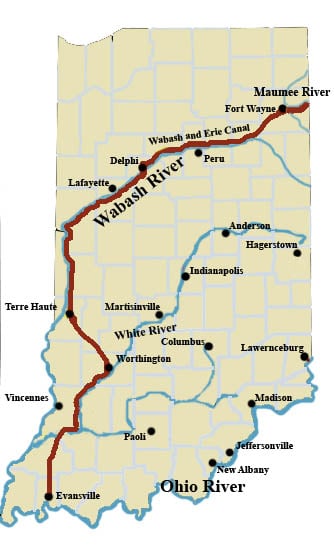
The Wabash & Erie Canal once ran 497 miles from Lake Erie (Toledo, Ohio) to the Ohio River (Evansville, Indiana), passing through the states of Ohio and Indiana. It was separate from, but followed along three different rivers:
- Maumee
- Wabash
- White
The official beginning of construction was in 1832, but it took many years to complete the entire canal. Although the operational lifespan of the canal was relatively short & it was a financial disaster, it did aid in Indiana's growth and development.
In a time with few roads of poor quality, moving 50 tons of freight over land took an estimated:
- 100 horses
- 25 drivers
- 25 wagons
The same amount of cargo could be moved faster, farther and cheaper on a canal with:
- 2 mules
- 2 people
- 1 canal boat
Canal Design
Canal construction cost was dependent upon the amount of earth which had to moved. Therefore the canal was relatively shallow (minimum depth of 4 feet) and narrow (20 feet wide at the bottom). To fit on the canal, boats were narrow (two canal boats had to be able to pass each other) and had flat bottoms with shallow draft (usually just under three feet). To maximize the amount of freight and passengers they could carry, canal boats were long, usually around 75 feet. The boats could only be turned around in large round basins, which were scattered along the canal at destination points.
A ten foot wide towpath was built alongside the canal for the draft animals towing the boats. Most canal traffic was freight boats, which were typically towed by mules. Passenger boats, which traveled faster, were pulled by horses. Passengers would often sit on the roof of the boat, especially during hot summer days.
73 locks were required along the canal. 34 were made of stone and 39 of wood. The wooden locks were originally intended to be temporary and eventually replaced with stone, but this didn't happen. Remains of the stone locks can still be found in a few locations, such as the Kerr Lock in Lagro. The timber locks mostly rotted away after the canal ceased operation. In 1991 highway workers uncovered the Groanuer Lock In New Haven, which is near Fort Wayne. This timber lock had been buried and was well preserved, It is the only intact timber lock that has been found. About two-thirds of the lock was excavated. The timbers were sent to the University of South Carolina for preservation. A small portion of the lock is exhibited at the Indiana State Museum.
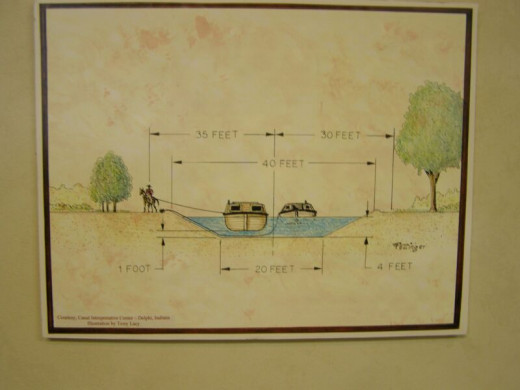
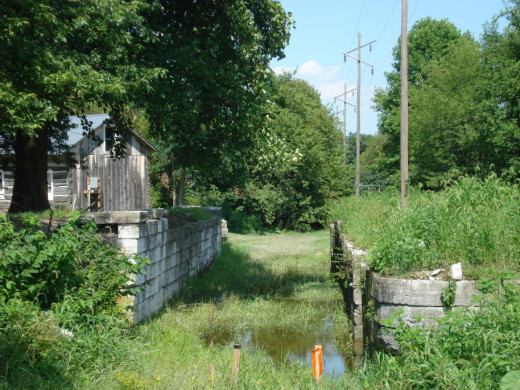
Canal Construction
In 1827 the U.S. Congress passed legislation that provided an extensive land grant to the state of Indiana if they began construction a canal within five years. Indiana appointed three commissioners to determine a route. After some political wrangling, groundbreaking began in Fort Wayne on February 22, George Washington's birthday, in 1832. In those days, groundbreaking ceremonies were almost always held on the Fourth of July. In this case, the deadline to begin construction was March 2, so they were forced to go with Washington's birthday instead.
The canal reached Huntington in 1835, and Logansport in 1837. A recession known as the Panic of 1837 slowed construction considerably. In 1843 the canal was extended to Lafayette, then Terre Haute in 1848. Finally, in 1853 it reached Evansville on the Ohio River. At one point it was possible to travel from New York City to New Orleans by taking these inland waterways:
- Hudson River
- Erie Canal
- Lake Erie
- Wabash & Erie Canal
- Ohio River
- Mississippi River
This was possible only for a very short span of time. Due to railroad competition, high maintenance costs and crushing debt, portions of the canal began to shut down. By 1860, most of the section between Terre Haute and Evansville was shut down. Twenty miles of canal north of Terre Haute were abandoned in 1868. Finally, in 1874 the canal declared bankruptcy and its assets were auctioned off in 1876.
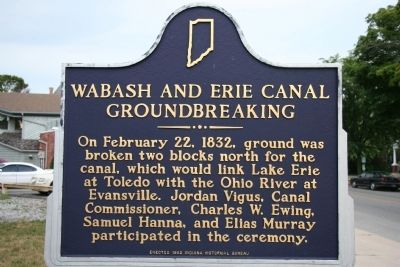
Traveling on the Canal
In the video below, Mrs Spoonaugle details her trip from New York to Delphi, Indiana by way of the Erie Canal, Lake Erie and the Wabash & Erie Canal. She talks about her accommodations aboard the canal boat, crossing over the Eel River on an aqueduct, and other topics related to her trip. She mentions passing by "Raw, ugly towns" but describes Fort Wayne as a "Fine, enterprising town."
Wabash & Erie Canal Park in Delphi
The state of Indiana restored a 14-mile section of the Whitewater Canal shortly after World War II, but very little remains of the Wabash & Erie Canal. In 1972 citizens of Delphi Indiana realized they had something special in the 2.5 mile stretch of canal in their town. They began establishment of the Wabash & Erie Canal Park. Today at the park you will find:
- Interpretive center
- Pioneer village
- Hiking / biking trails
- Boat tour
- Campground
The best time to visit is during the Canal Days Festival, which is held July Fourth weekend.



